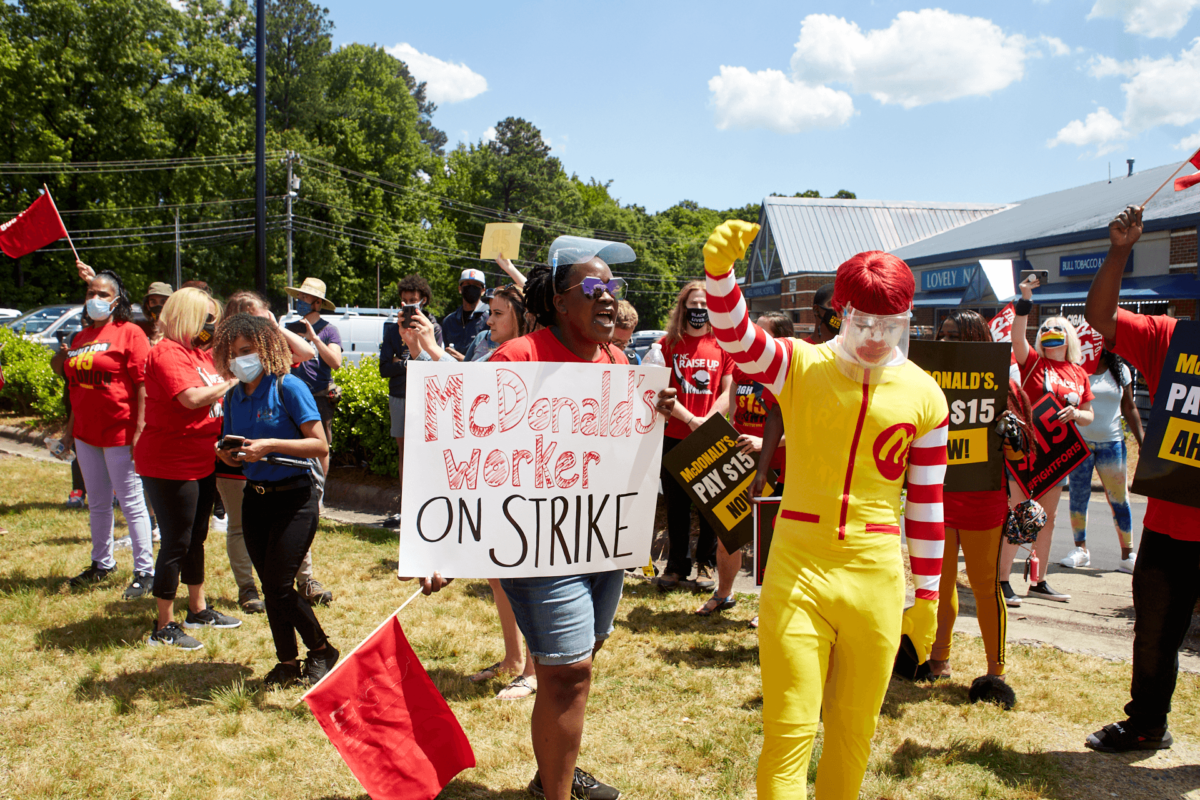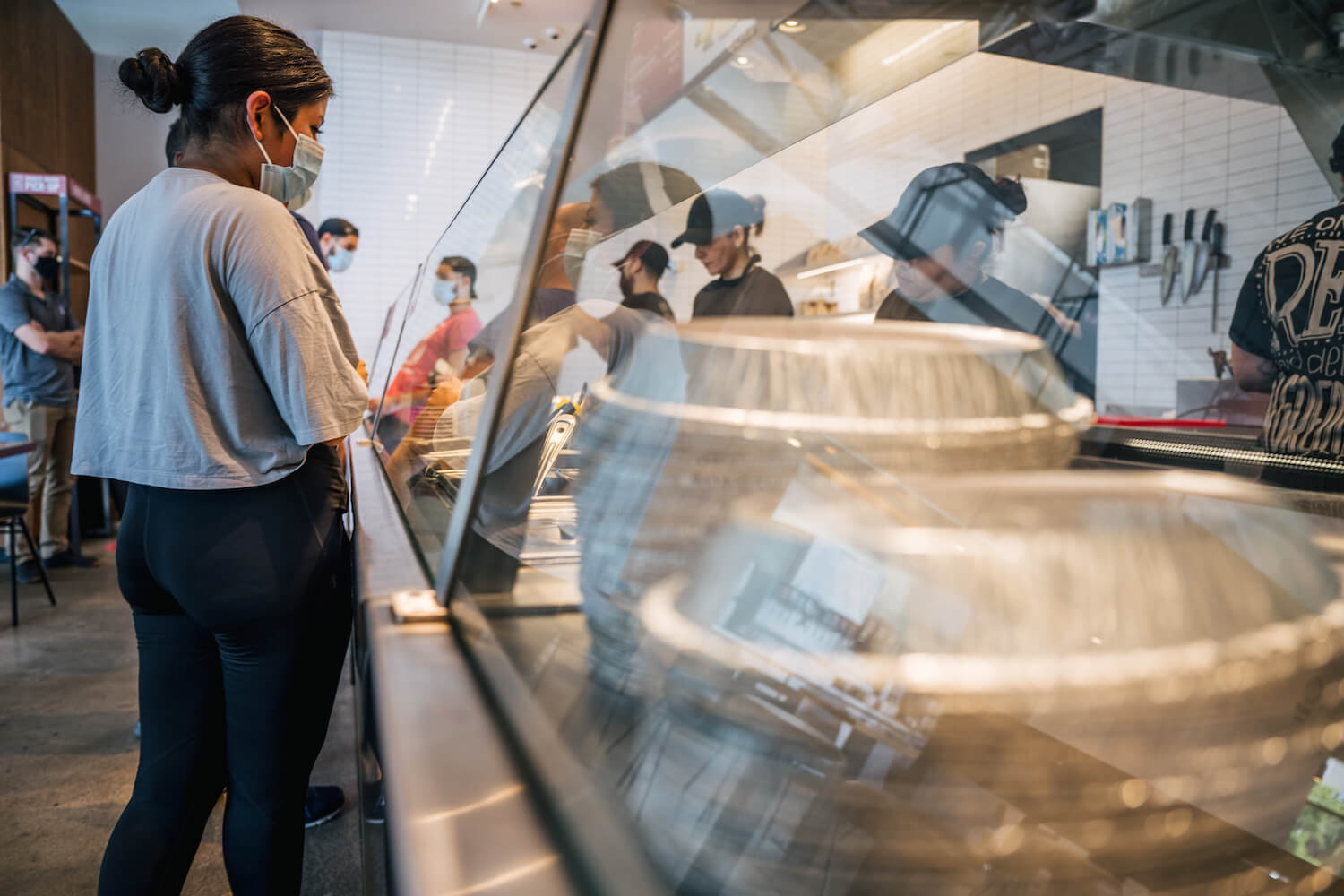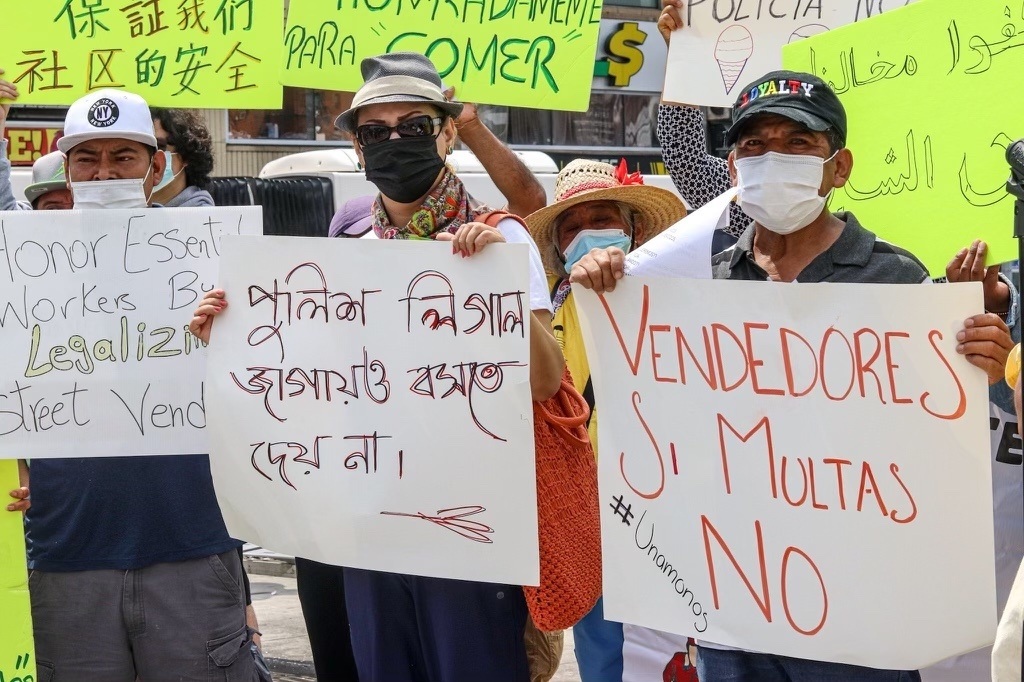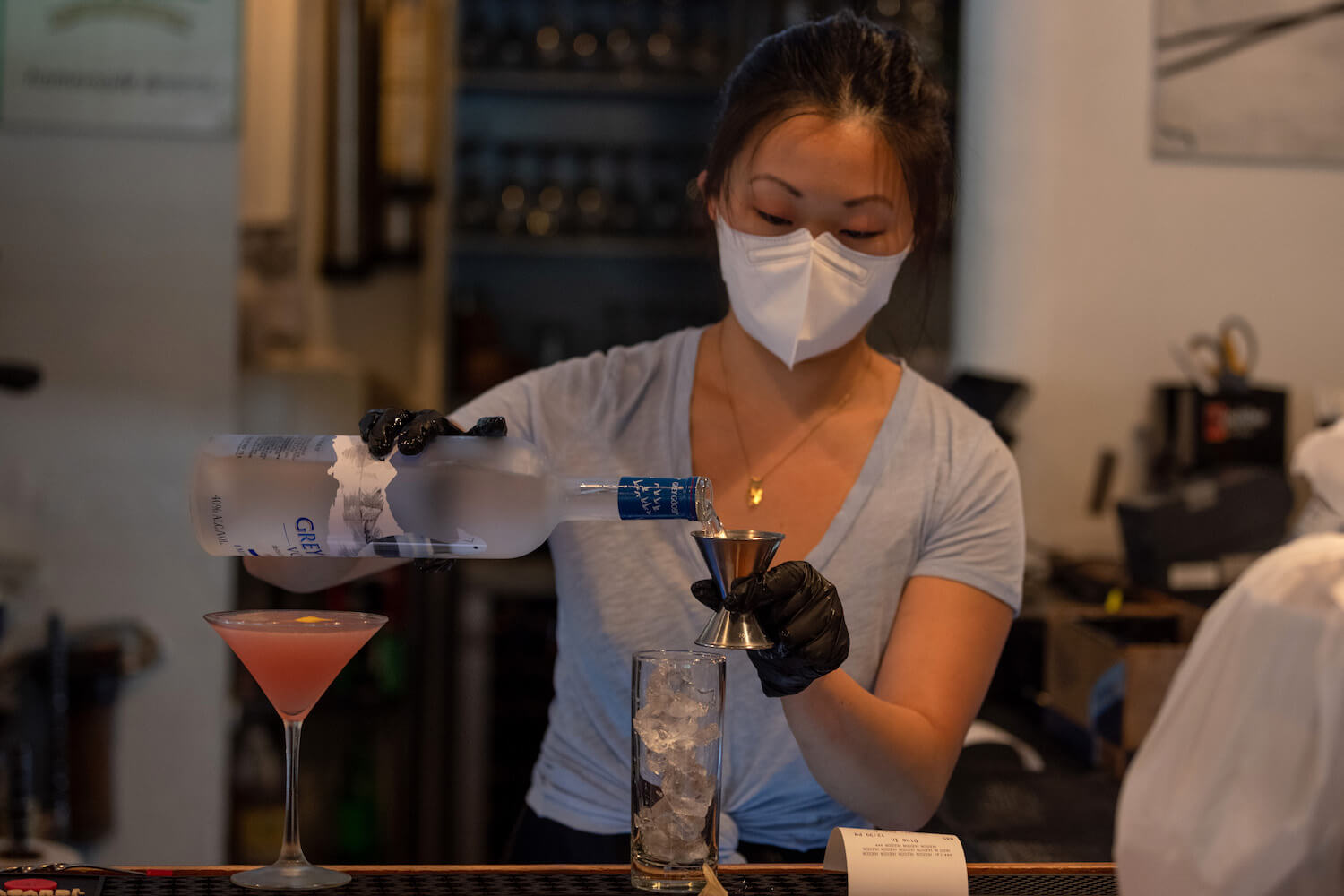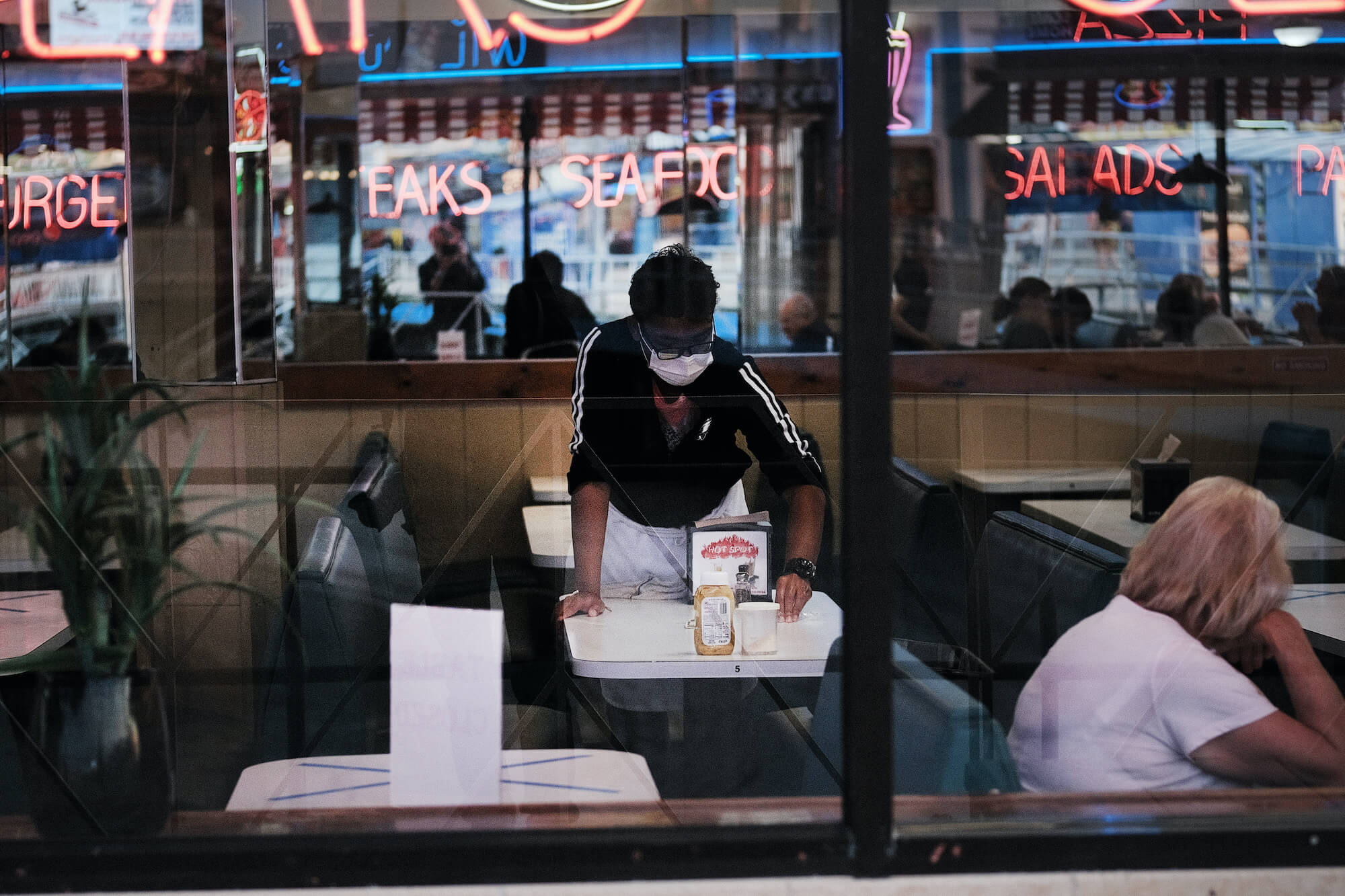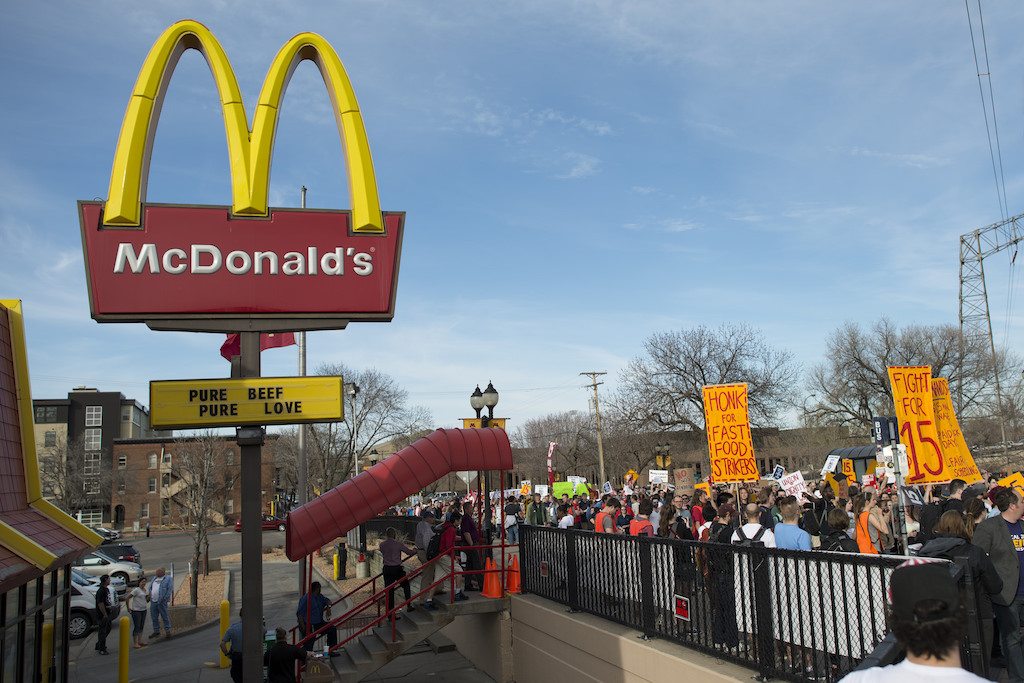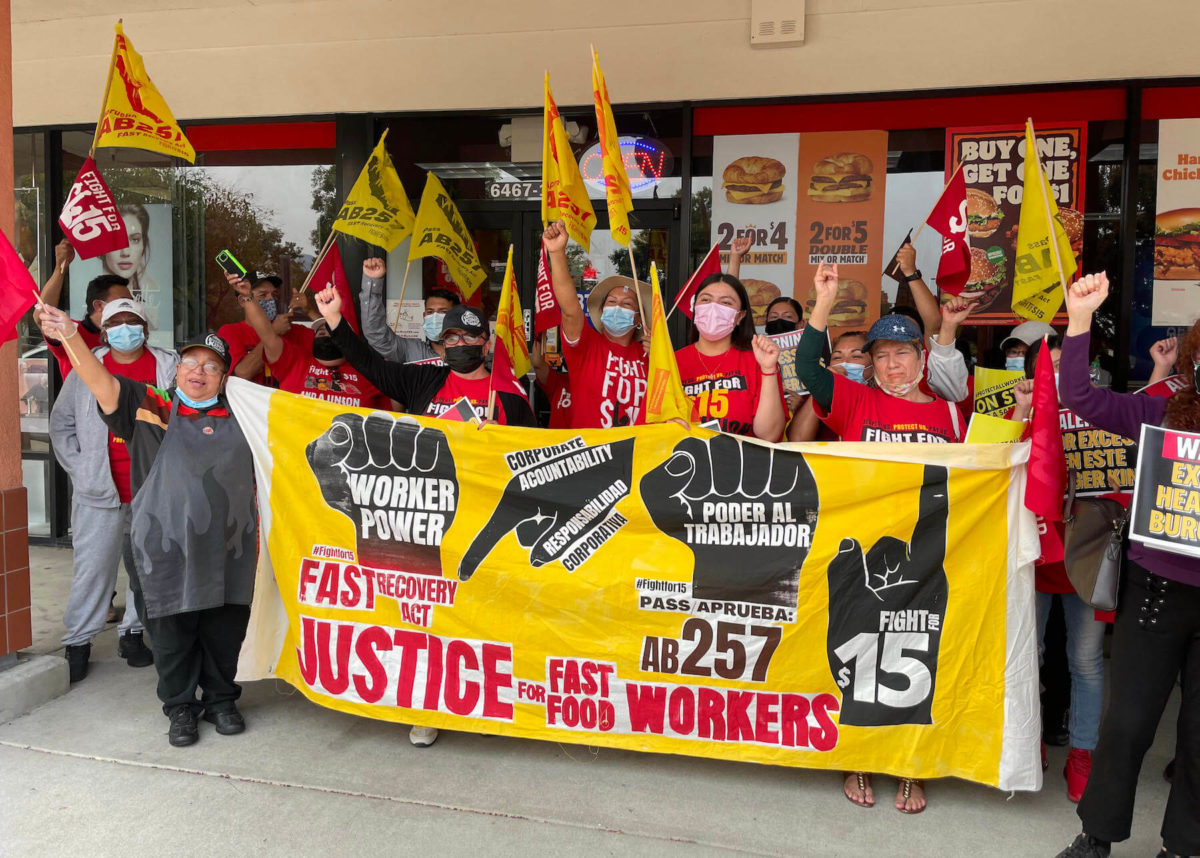
Fight for $15
With record-breaking temperatures blanketing the country and no federal heat standard in place, workers find they have no choice but to walk out.
Pictured above: Warning of excessive heat conditions and demanding justice, workers strike outside of a Burger King location in San Jose, California.
As a heat dome blanketed Portland, Oregon in late June, workers at Voodoo Doughnut’s Old Town location found themselves crumbling in their store. Even with air-conditioning in the shop, ambient thermometers brought in by staff recorded interior temperatures upward of 96 degrees. Workers were breaking out in heat hives and doubling over from nausea. The company’s iconic Bacon Maple Bar doughnuts, with their frosting unable to set due to the heat, literally melted into soggy brown mush.
The high-90 temperatures in the Old Town location were already a drastic surge from the more routine ambient summer heat, which was estimated to be around 80 degrees in the store, even with the fryers running all day. But on June 27, when temperature highs in Portland would eventually reach a record-breaking 112 degrees, it reached more than 100 degrees inside Voodoo Doughnut. Workers went to management and suggested that they close the shop early for their safety. After their demand was waved off, a group of employees walked out and went on strike through Monday, when the city’s temperatures soared even further to 115 degrees.
“We would rather walk out on strike than to see a coworker collapse and hurt themselves or suffer heat stroke or worst case scenario, you collapse while you’re over a fryer,” said Samantha Bryce, a Voodoo Doughnut employee in Portland, who participated in a strike with her colleagues over workplace safety in June. “We don’t want someone to get hurt before the company takes action.”
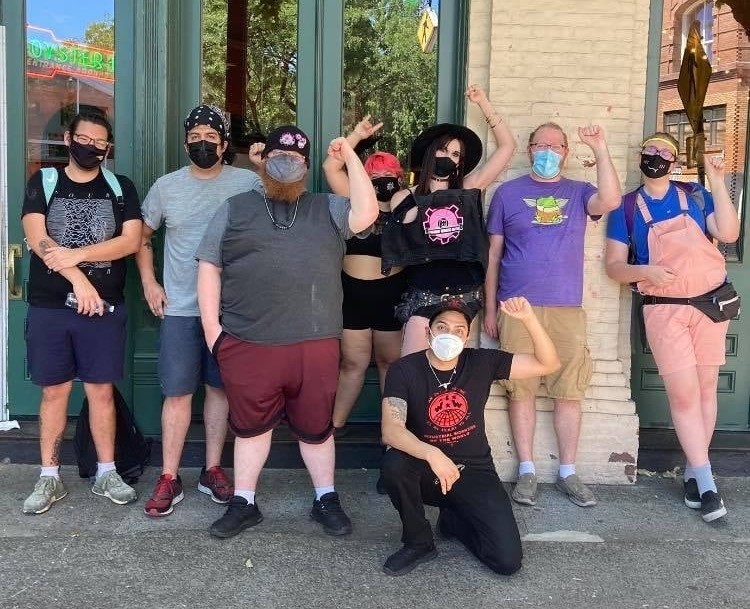
On June 27, Doughnut Workers United went on strike to protest the conditions at Voodoo Doughnut.
American workers have long had limited protections against extreme temperatures in the workplace. The Occupational Safety and Health Administration (OSHA), the federal agency responsible for ensuring workplace safety, has yet to implement a federal heat standard, instead relying for a half-century on a broad requirement that employers provide a work environment “free from recognized hazards.” But as record-breaking temperatures blanketed the nation this summer, food service workers, many of whom have spent the past year and a half feeding people through a global pandemic, found that their complaints to employers about broken and inefficient cooling systems were going ignored. A number of workers walked off their jobs and tweeted out their workplaces’ injustices, making a point that with heat waves becoming increasingly common, the needle on kitchen thermometers should not shoot up toward all-time highs.
The connection between workplace injuries and high temperatures is well established. New research has found that between 2001 to 2018, hotter daily temperatures resulted in an additional 20,000 workplace injuries in California. These injuries spanned both indoor and outdoor jobs, and the increases were linked to injuries not only directly tied to extreme heat, such as heat strokes, but also mishandling machinery or falling off scaffolding.
Debbie Berkowitz, former chief of staff at OSHA during the Obama administration, noted that the federal agency is often constrained in its ability to issue and enforce rules protecting worker safety, in part due to limited funding and staff. According to Berkowitz, it took the agency roughly two decades, which included her six years at OSHA, to issue a health standard in 2016 that reduced the amount of silica people could be exposed to in the workplace. According to a Government Accountability Office report, the agency has an average standard-setting time of roughly eight years.
Because federal OSHA has left a void in issuing a specific federal heat standard, Berkowitz said, “this is an area states can move in and create regulations.” Over the past two decades, however, only a handful of states have implemented permanent workplace safety standards for heat, among them California, Washington, and Minnesota. This summer, Oregon adopted emergency rules, and is expected to implement permanent rules later this year, while Washington announced stronger emergency rules addressing extreme heat.
The heat standards in California and Washington, both which apply only to outdoor workers, currently include provisions that, at varying temperature thresholds, employers must provide water and access to shade, encourage or give rest breaks, and train employees on recognizing heat-illness and how to respond in a related emergency. Oregon’s emergency rules are similar, but also apply for indoor workers as well. Minnesota, whose heat standard focuses on indoor workers, requires that a two-hour, time-weighted average temperature based on the Wet Bulb Globe Temperature, which factors in air temperature, air speed, humidity, and radiation, does not exceed certain heat thresholds depending on the level of work activity.
Berkowitz added that due to its limited resources, federal OSHA is unable to respond to many complaints with actual inspections, and instead has to triage cases and send out inspectors only to those with the biggest hazards. “The problem is workers, really, besides calling in OSHA, don’t really have very many other rights. There isn’t a real clear—in most states—right to refuse hazardous work,” she said. “And so then workers are faced with this horrible choice of their paycheck and livelihood or their lives, and that should not happen in any workplace. It really is about employers stepping up and doing the right thing.”
With minimal government oversight for temperatures in restaurants, workers have taken it upon themselves to get the public’s attention and rectify the extreme heat plaguing their workplaces. Robbie Cochran, who walked out with three of her colleagues at a McDonald’s in Detroit after working in an environment that she compared to “being in an oven,” told The Counter that her manager suggested her concerns about heat were merely symptoms of menopause, and “gave me a big cup of water.” After a manager at a Jack in the Box in Sacramento, Calif., made a similar response to workers’ complaints about their air-conditioning being broken, during a string of 100-plus-degree days in June, employees went on strike. And at a Hooters in Houston, workers walked out after reportedly enduring over a month without air-conditioning.
“You guys make all this money and we need stuff done, we need stuff to be fixed,” Cochran, a member of the Fight for $15 movement, said, referring to the heads of the McDonald’s corporation and her location’s franchise owner. “It’s not fair that you have us working in this heat and you out somewhere in air-[conditioning] or wherever.”
In Eugene, Oregon, Stephen Buell, a former crew member at the regional fast-casual chain Cafe Yumm, said that starting in June, the restaurant’s kitchen would become extremely hot amid repeated heat waves. Workers regularly called out of shifts, and some even quit due to the combined stress of heat and understaffing.
Following a string of days in late July where the kitchen thermometer registered ambient temperatures in the high 90s, even with the presence of a swamp cooler and fans, Buell and his colleagues requested to their managers that the store close early. The request was eventually denied by corporate. Frustrated, Buell posted a picture on Twitter of the thermometer registering 96 degrees, which he said prompted some of his few thousand followers to reach out to the company’s higher ups, and later, a personal call from the company about the heat in the kitchen. As the daily temperature in Eugene shot past 100 that weekend, Buell said his location stayed shuttered for workers’ safety.
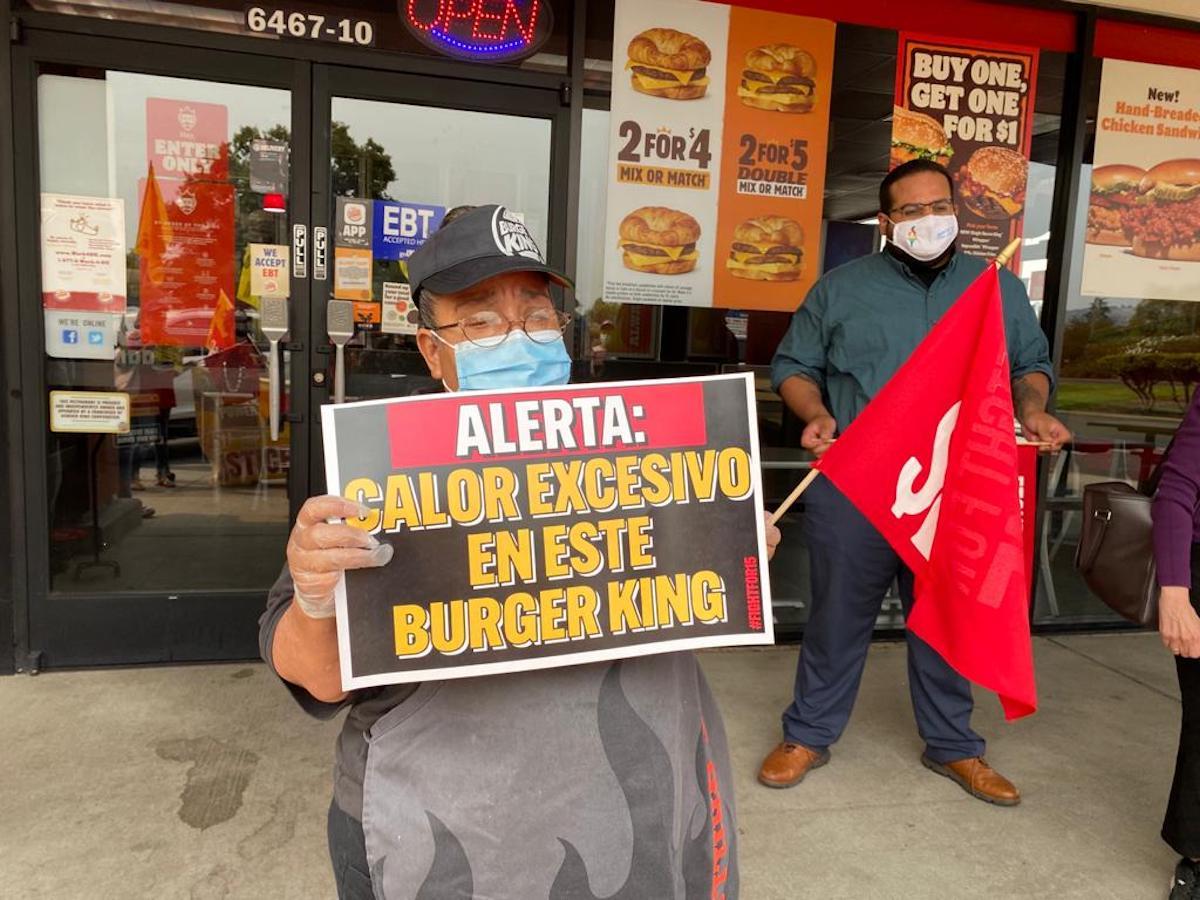
A worker strikes in front of Burger King holding a sign in Spanish that translates to “Warning: excessive heat at this Burger King”.
Fight for $15
“If it wasn’t for my post, maybe they would have closed early, but I know for sure they would have opened that day,” he said. “They need to start taking better precautions or something, because it’s going to get bad.”
In some cases, companies like Cafe Yumm are pointing to a disruption in the supply chain caused by the pandemic, which has resulted in weeks-long delays for air-conditioning units as well as parts necessary for repairs. During his call with a corporate employee, Buell was told that his location was on a waiting list for a proper air-conditioning system. As a stopgap measure, the company fixed the air ducts above the stove and installed a standing air-conditioning unit in the dish room, along with extra fans.
Still, even with an industry-wide staffing crisis, workers have lost their jobs while protesting hazardous temperatures in their stores. According to Bryce, an organizer of the Voodoo Doughnut worker’s union, Doughnut Workers United, which is not recognized by the company, six workers were fired for participating in the walkout and strike. But Bryce noted that not long after the company laid off its employees, it boarded up the windows, blocking hours of direct sunlight from cooking the front-of-house employees.
“They already terminated workers for saying something and taking action,” Bryce said. “And so by acknowledging that they needed to board up their windows after the fact to me is an acknowledgment that what we did was essential.”

